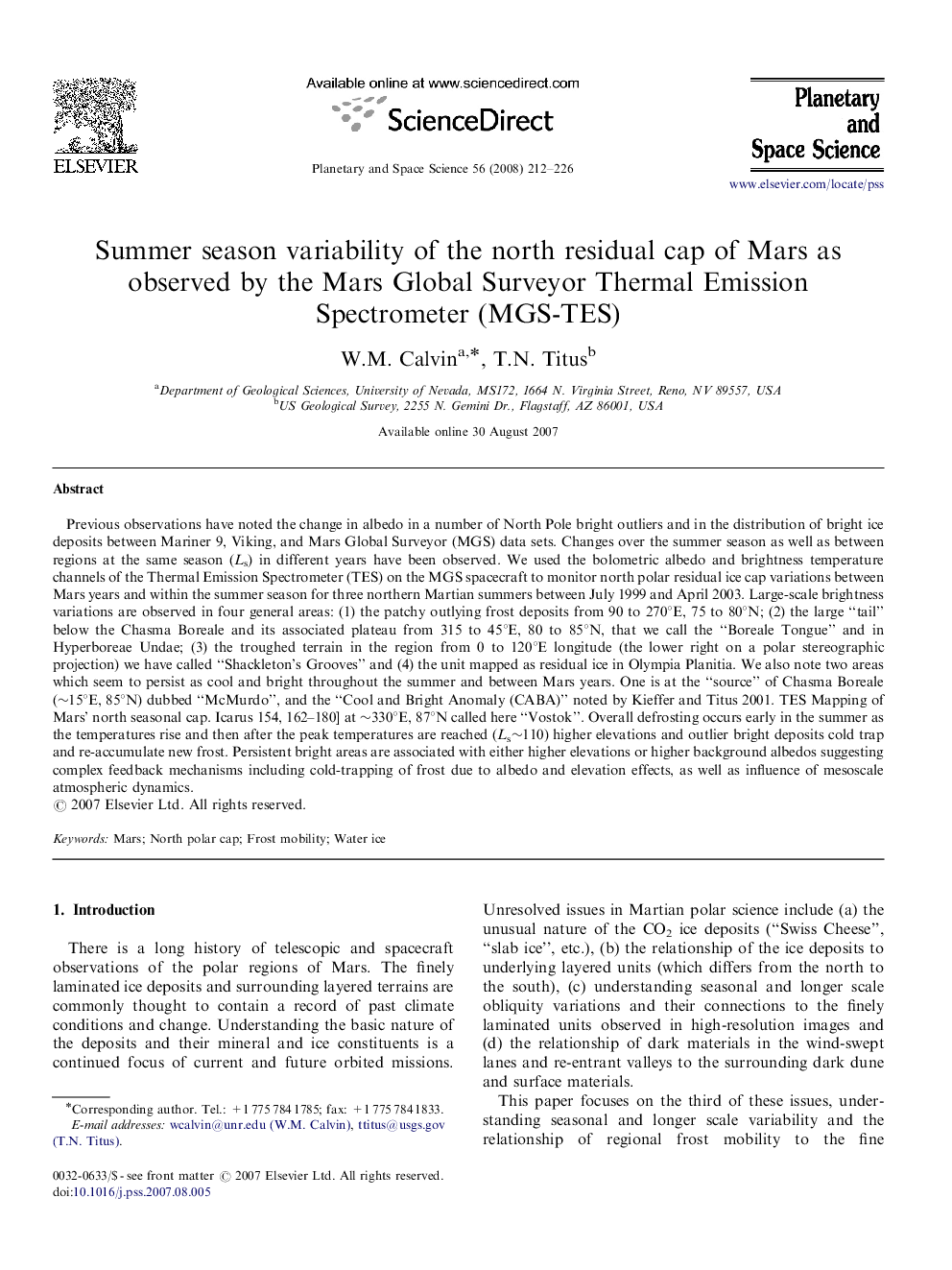| کد مقاله | کد نشریه | سال انتشار | مقاله انگلیسی | نسخه تمام متن |
|---|---|---|---|---|
| 1782813 | 1022362 | 2008 | 15 صفحه PDF | دانلود رایگان |

Previous observations have noted the change in albedo in a number of North Pole bright outliers and in the distribution of bright ice deposits between Mariner 9, Viking, and Mars Global Surveyor (MGS) data sets. Changes over the summer season as well as between regions at the same season (Ls) in different years have been observed. We used the bolometric albedo and brightness temperature channels of the Thermal Emission Spectrometer (TES) on the MGS spacecraft to monitor north polar residual ice cap variations between Mars years and within the summer season for three northern Martian summers between July 1999 and April 2003. Large-scale brightness variations are observed in four general areas: (1) the patchy outlying frost deposits from 90 to 270°E, 75 to 80°N; (2) the large “tail” below the Chasma Boreale and its associated plateau from 315 to 45°E, 80 to 85°N, that we call the “Boreale Tongue” and in Hyperboreae Undae; (3) the troughed terrain in the region from 0 to 120°E longitude (the lower right on a polar stereographic projection) we have called “Shackleton's Grooves” and (4) the unit mapped as residual ice in Olympia Planitia. We also note two areas which seem to persist as cool and bright throughout the summer and between Mars years. One is at the “source” of Chasma Boreale (∼15°E, 85°N) dubbed “McMurdo”, and the “Cool and Bright Anomaly (CABA)” noted by Kieffer and Titus 2001. TES Mapping of Mars’ north seasonal cap. Icarus 154, 162–180] at ∼330°E, 87°N called here “Vostok”. Overall defrosting occurs early in the summer as the temperatures rise and then after the peak temperatures are reached (Ls∼110) higher elevations and outlier bright deposits cold trap and re-accumulate new frost. Persistent bright areas are associated with either higher elevations or higher background albedos suggesting complex feedback mechanisms including cold-trapping of frost due to albedo and elevation effects, as well as influence of mesoscale atmospheric dynamics.
Journal: Planetary and Space Science - Volume 56, Issue 2, February 2008, Pages 212–226